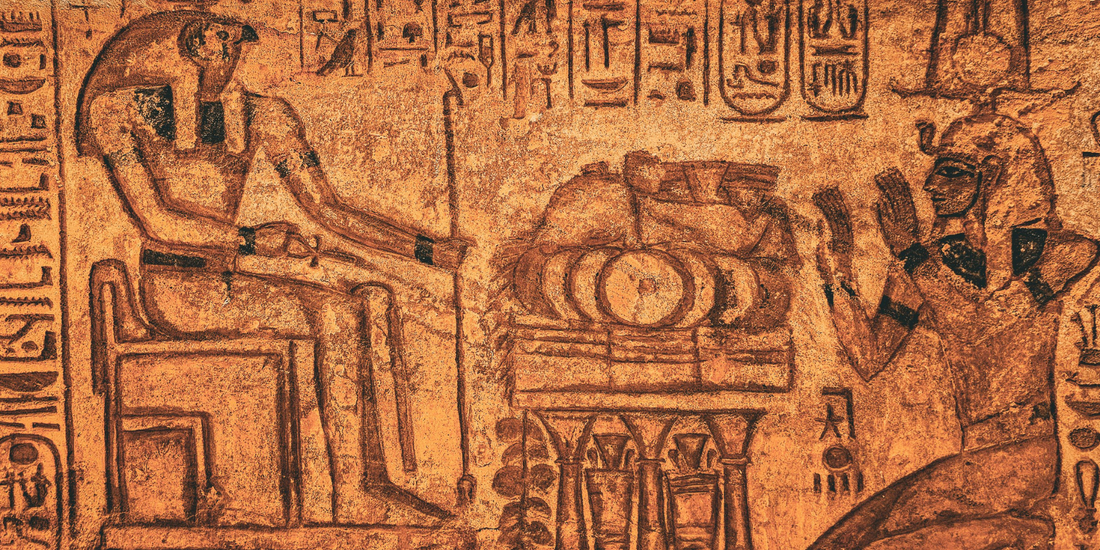
The History of Feet: Ancient Egypt’s Footwear Game
To kick off our History of Feet series, we’re taking a trip back in time, way back to when Birkenstocks weren’t around yet sandals were already the height of fashion.
Imagine this: It’s ancient Egypt, and you’re the Pharaoh, strolling through your palace in sandals that are more than just footwear. These were status symbols. Crafted from papyrus, palm leaves, or fine leather, they were often decorated with jewels and elaborate designs. Your footwear was more than protection for your soles, it was a direct signal of power, wealth, and social hierarchy. If you wore the right pair of sandals, everyone in the room knew who was in charge. And let’s be honest, RIP Nefertiti, you would have loved a red sole under those sandals.
Fashion Meets Function
But these sandals weren’t just about looks. The Egyptians were surprisingly innovative when it came to foot health. Archaeological finds reveal that many sandals had distinct shapes for the left and right foot, which may sound obvious now, but was groundbreaking at the time. Before this, most cultures made simple foot coverings without ergonomic design.
The Egyptians were also among the first to create variations in footwear for different social classes and activities. Farmers wore basic woven sandals, while nobles and royals had pairs reinforced with leather, linen, and adorned with gems. They were already thinking about how different lifestyles required different footwear, a concept that lives on today in everything from running shoes to specialized work boots.
The Cairo Toe: Ancient Orthopedics
One of the most fascinating discoveries in Egyptian history is a prosthetic wooden toe dating back to around 1500 BC. Researchers believe it wasn’t just cosmetic, but functional, helping its wearer walk more naturally. That means the Egyptians had an early grasp of biomechanics and gait correction. This isn’t far removed from modern orthotics and insoles designed to improve posture and reduce strain up the kinetic chain.
In other words, long before podiatrists or sports science, the Egyptians were experimenting with custom solutions to improve alignment and reduce discomfort.
Foot Care as Ritual
Foot care wasn’t just practical, it was ritualistic. Oils, massages, and exfoliation treatments were part of daily routines for Egyptians across social classes. Foot baths with aromatic herbs and ointments were common, reflecting both hygiene and luxury. The ancient texts describe ointments used to soothe tired feet after long days, not so different from today’s foot masks, rollers, or spa pedicures.
If people 3,500 years ago knew the importance of taking care of their feet, what excuse do we have today for neglecting them after a long day on hard floors?
The Parallels with Modern Life
Modern science shows that poor foot health can lead to cascading problems throughout the body. Misaligned arches can trigger knee pain, hip strain, and even lower back issues. The Egyptians may not have had MRI machines, but their practices suggest they understood the connection between foot alignment and overall well-being.
At Groov, we echo this philosophy. Proper footwear and insoles aren’t just about comfort, hey’re about maintaining holistic health. Your feet are the foundation of your kinetic chain, and when they’re properly supported, the rest of your body thanks you.
Groov: Carrying Ancient Wisdom Forward
Next time you slip into your Groovs, think of it as a nod to those ancient innovators who knew the value of healthy, supported feet. Whether you’ve got high arches, flat feet, or just crave a comfier step, Groov insoles channel the same spirit of customization and care that defined Egyptian footwear.
It’s not about being trendy, it’s about honoring a history of innovation, where feet were seen as vital to strength, balance, and daily life.
Here’s to keeping history underfoot and comfort at the forefront.




